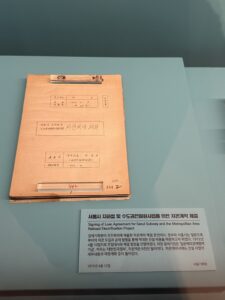I was in Seoul for the 50th anniversary of the Seoul Subway. The anniversary is also a national holiday, Liberation Day (광복절). Liberation day is celebrated in both North and South Korea every August 15th and commemorates the liberation from 35 years of Japanese colonial rule which ended in 1945.
On the same day in 1974, South Korea opened Line 1 of the Seoul Metropolitan Subway to the public. Line 1’s track length has grown over the last 50 years and continues to be an integral part of the transportation network.

The Fourth Subway System in Asia
South Korea was the 4th country in Asia to have a subway system. Tokyo Metro in Japan claimed the honor of the first country in Asia to build a subway in 1927. Japan built multiple subway lines in multiple cities before any other Asian country opened a subway. First was Osaka Metro in 1933, then Nagoya Subway in 1957, and finally Toei Subway in 1960.
China was the second country in Asia to create a metro system. Beijing Subway opened in 1969. The third country was North Korea which opened the Pyongyang Metro in 1973, narrowly beating South Korea. I can’t help but wonder if there was some political rivalry in the race for 3rd place.
Seoul planned four lines for the original electrified subway system. Line 1 was the first to open on August 15th, 1974 and as a transit nerd, I was thrilled to be able to celebrate this half-century milestone!

50th Anniversary Exhibit
I also went to an exhibit commemorating the anniversary at the Seoul Museum of History. The exhibit was free and it was beautifully curated with historical design plans, engineering artifacts, and cultural memorabilia as well as plenty of interactive exhibits. The exhibit introduction aptly captured what I love about transit. The Director of Seoul Museum of History and the CEO of Seoul Metro wrote:
“The subway, which at the time was a novel experience for many, ushered in a new era gradually transforming people’s consciousness, lifestyles, cultural patterns, and urban landscapes.
Every morning and evening, it functions as a vehicle, transporting workers to their workplaces. At the same time, it has served as a mode of transportation, facilitating efficient and punctual travel for individuals. Subway stations also function as meeting points and spaces for consumption. Paradoxically, while instilling a sense of community, the subway can also induce feelings of solitude amidst the crowds.
Furthermore, its existence has instigated the restructuring of urban spaces and living circles. Notably, the subway, as a cultural space, has enriched people’s cultural experiences. For foreign visitors to Seoul, the subway becomes a tourist destination in its own right, shaping their impressions of the city.”
The subway is a practical and cultural icon in our cities that influences so many aspects of our daily lives and habits. One need not be a “train guy” to appreciate subway art, station food and shopping stalls, and the seamless way public transit allows citizens to work, live, and play. With that, I hope you enjoy some photos from the exhibit.








Leave a Reply